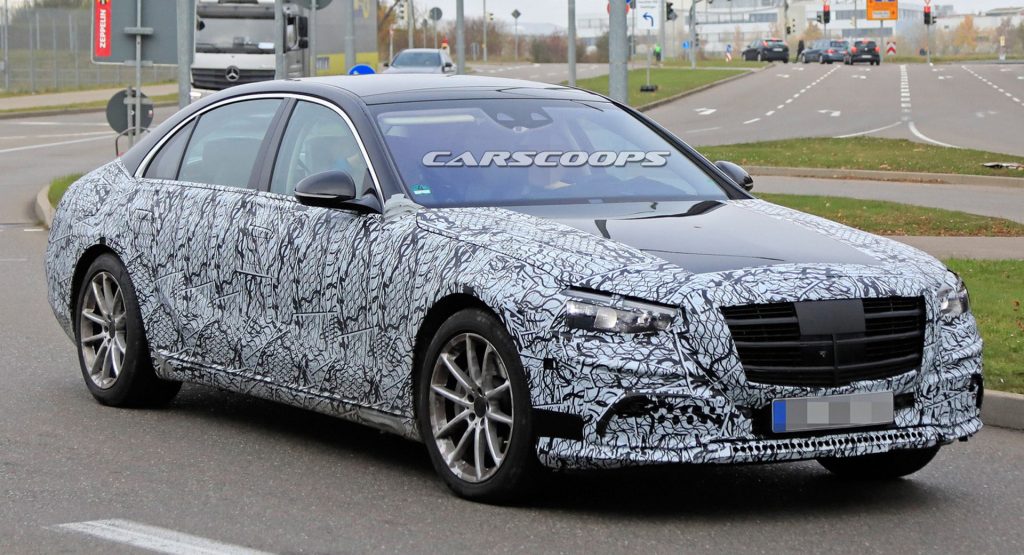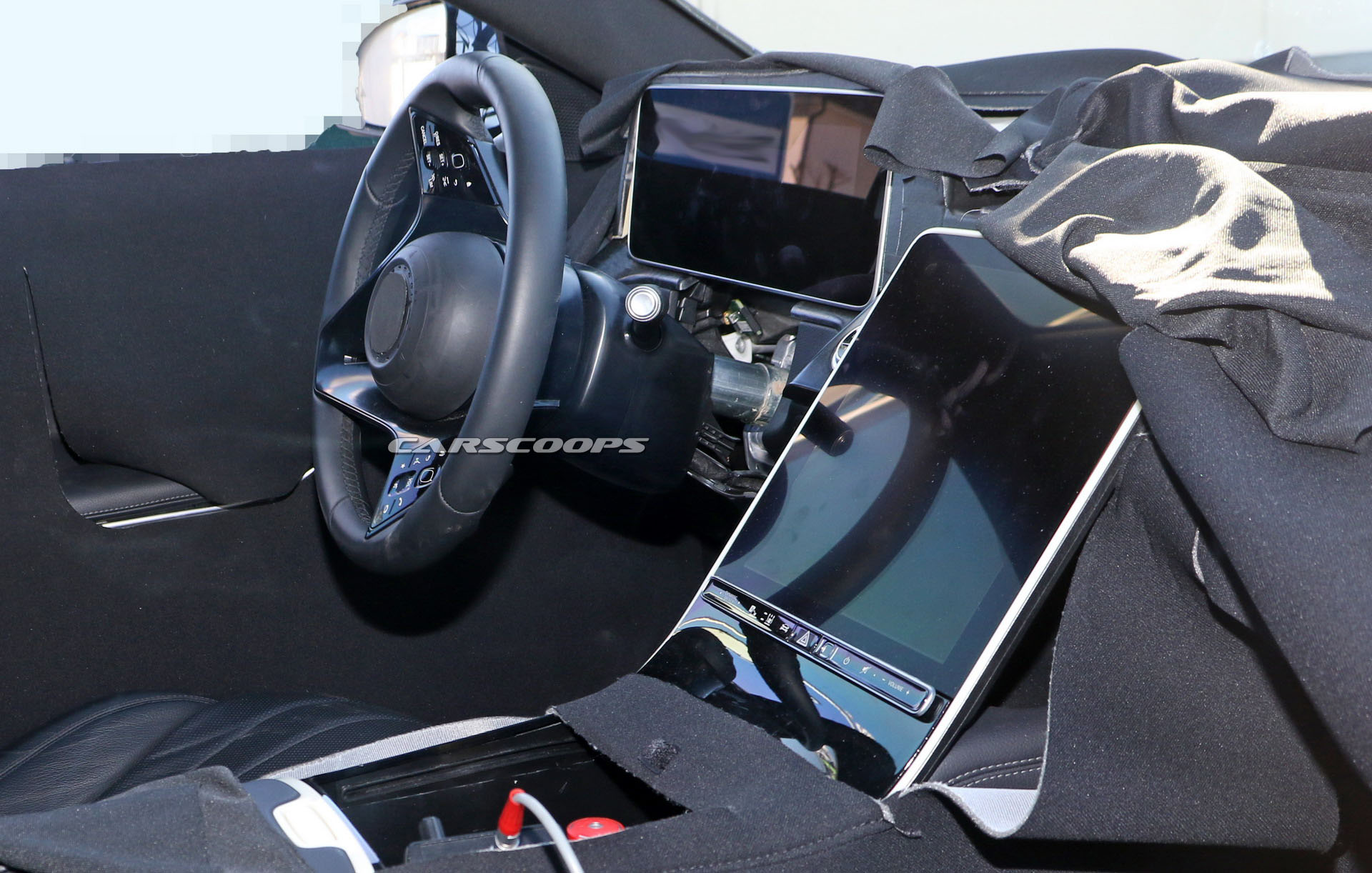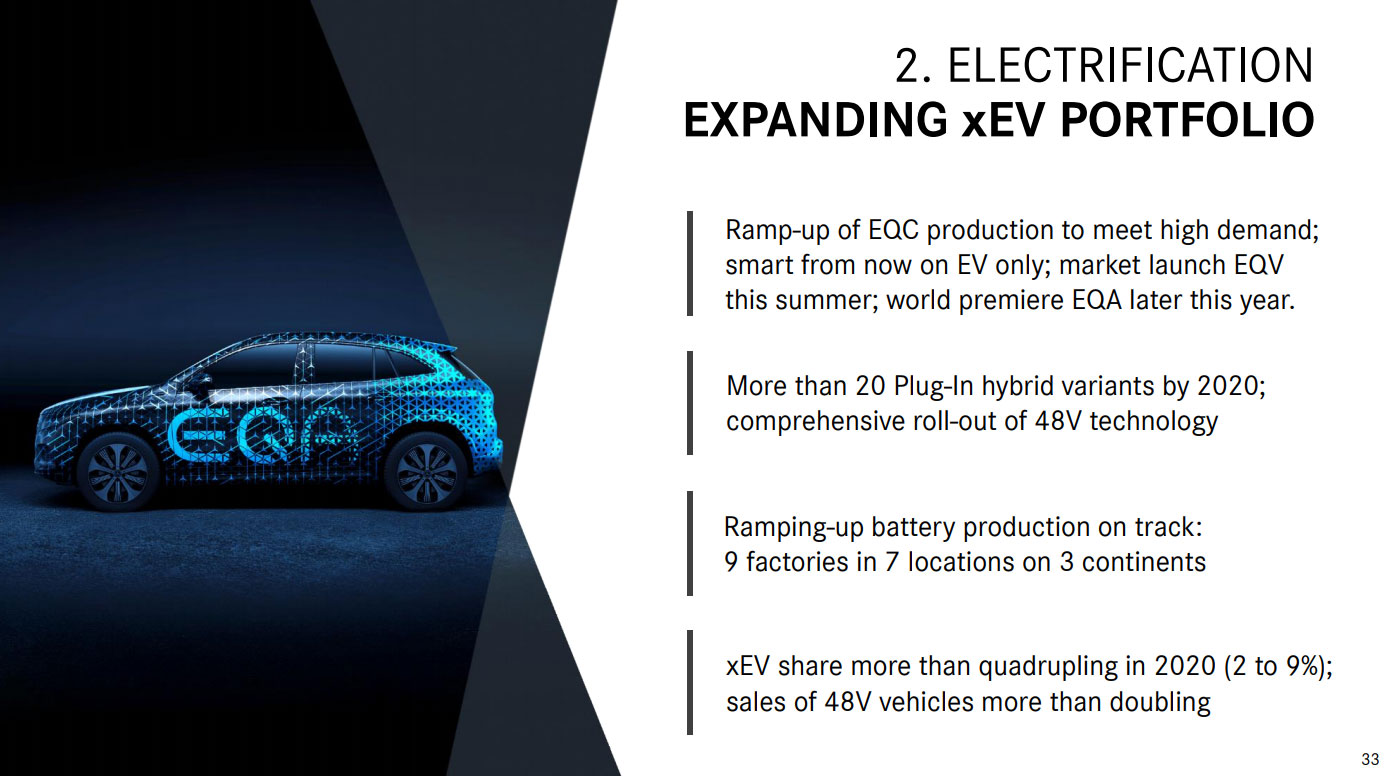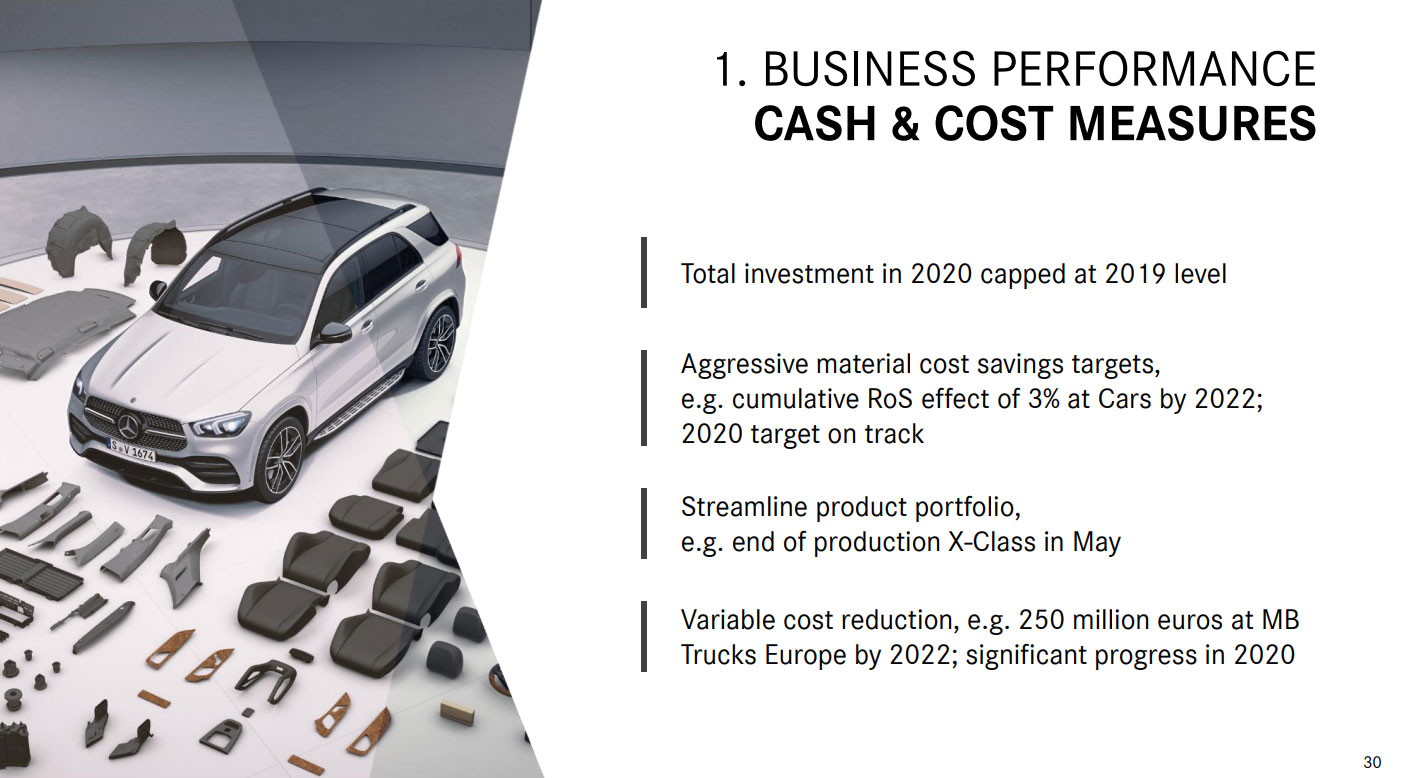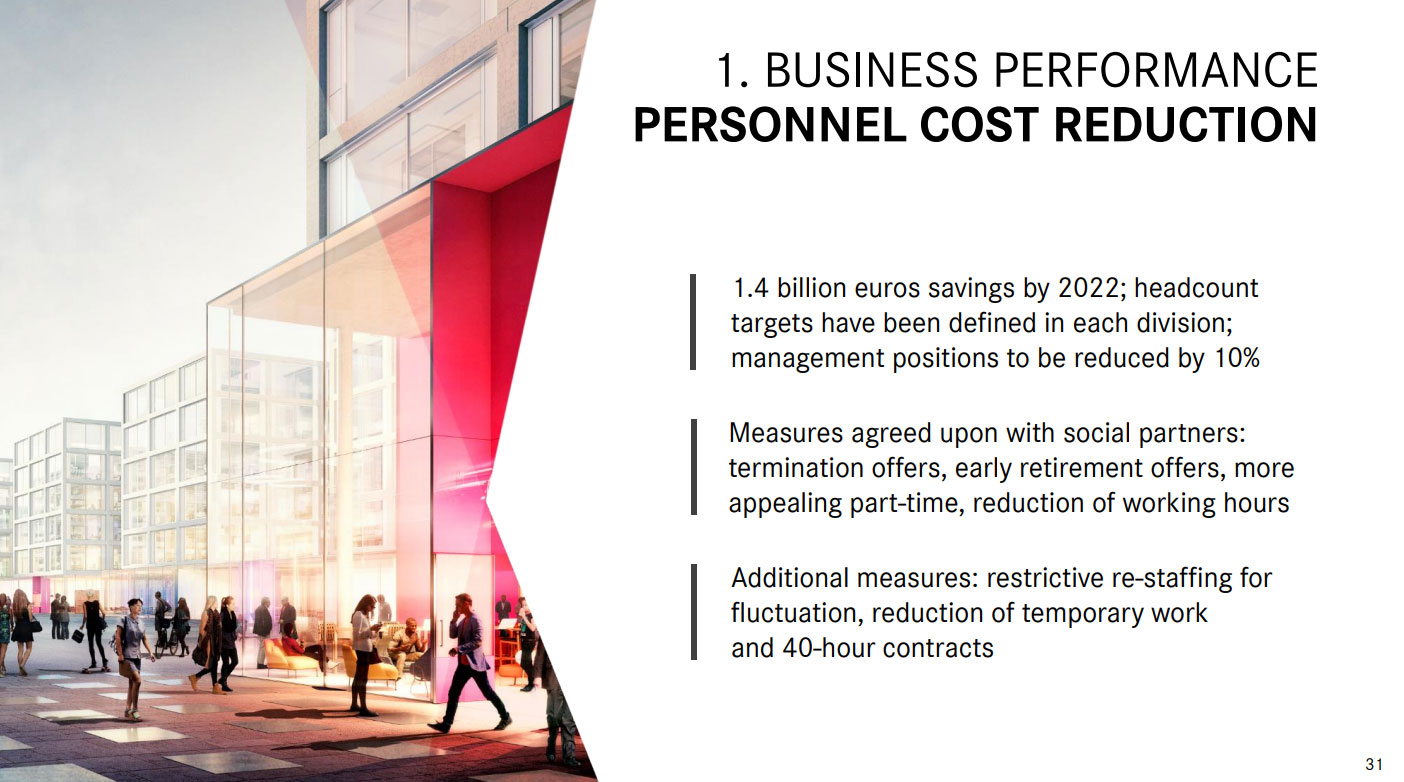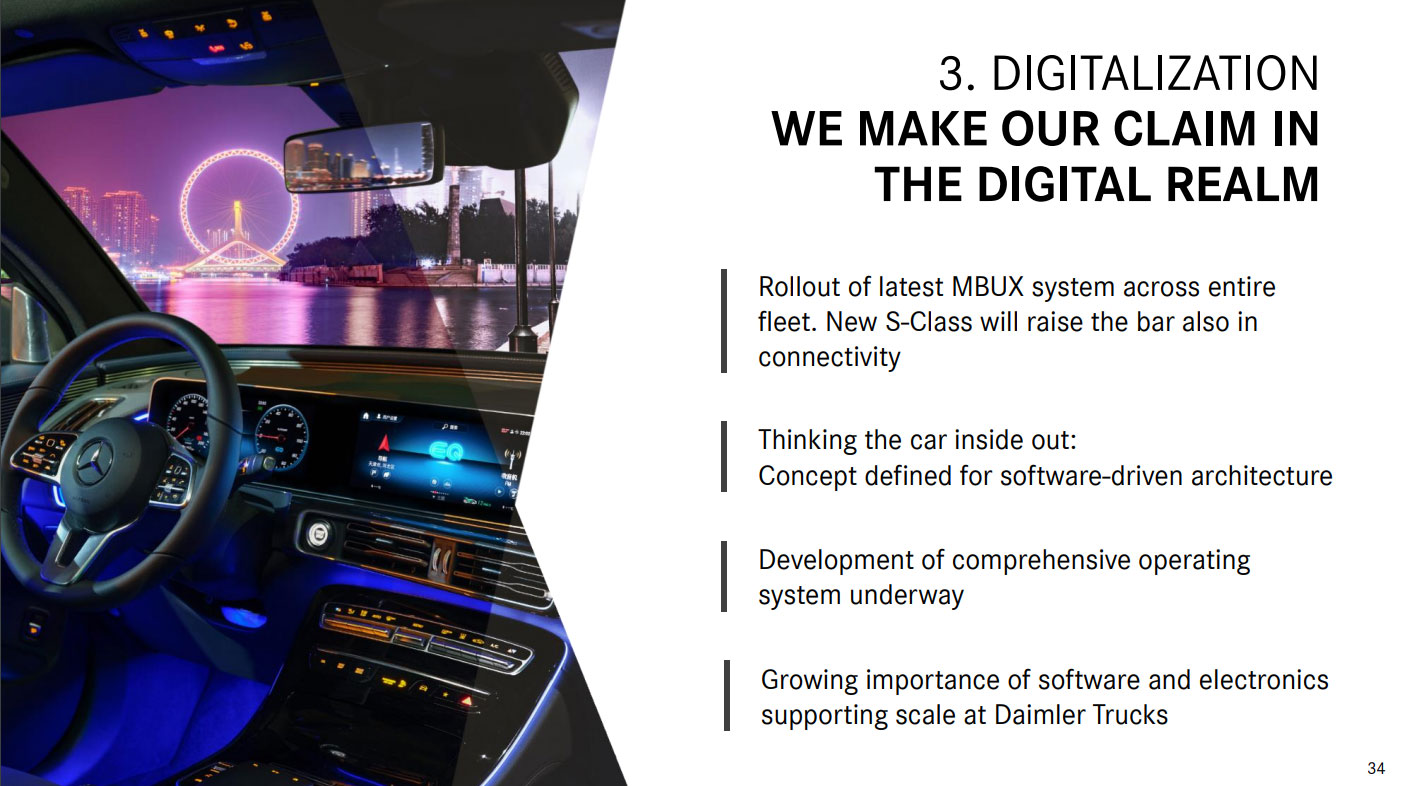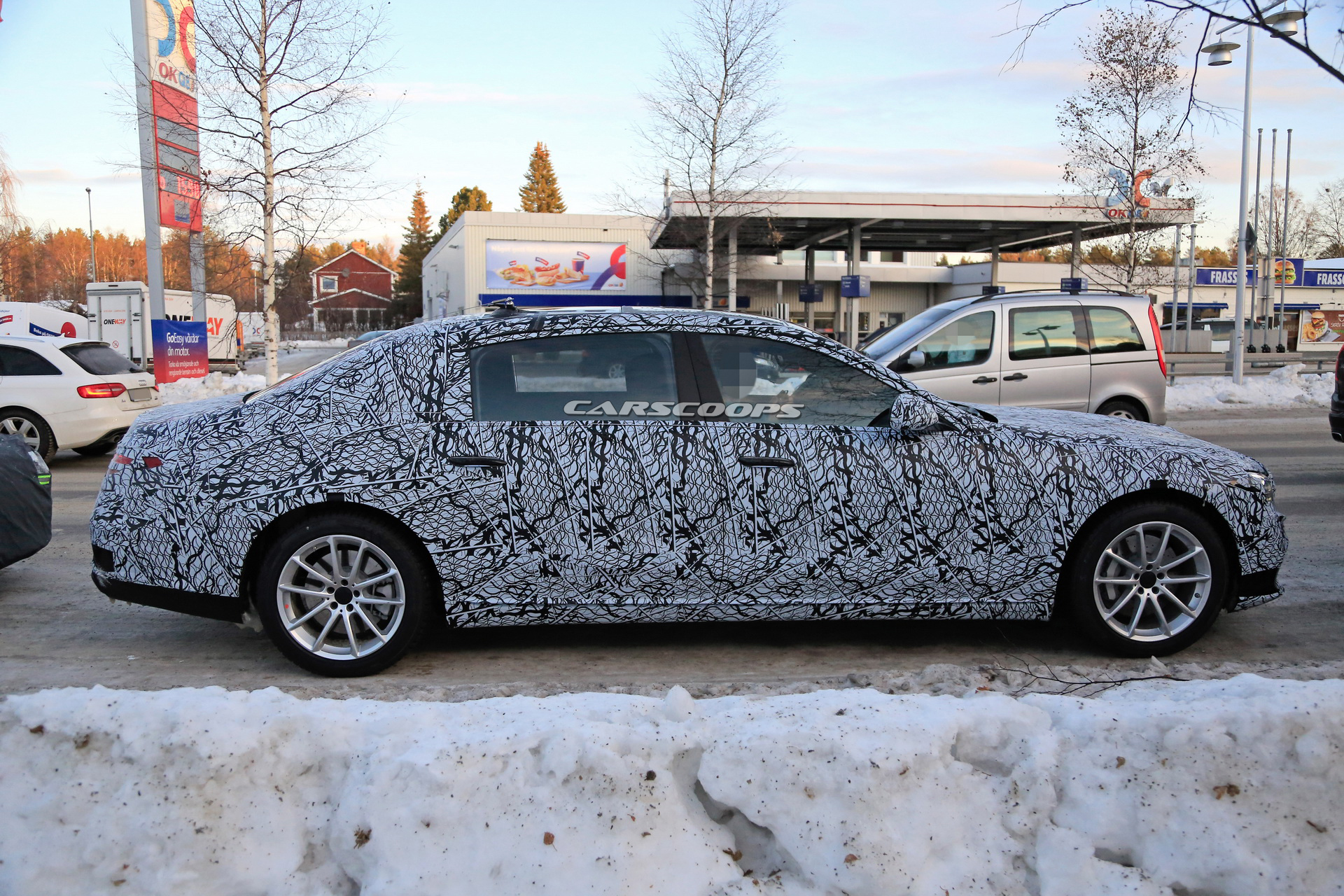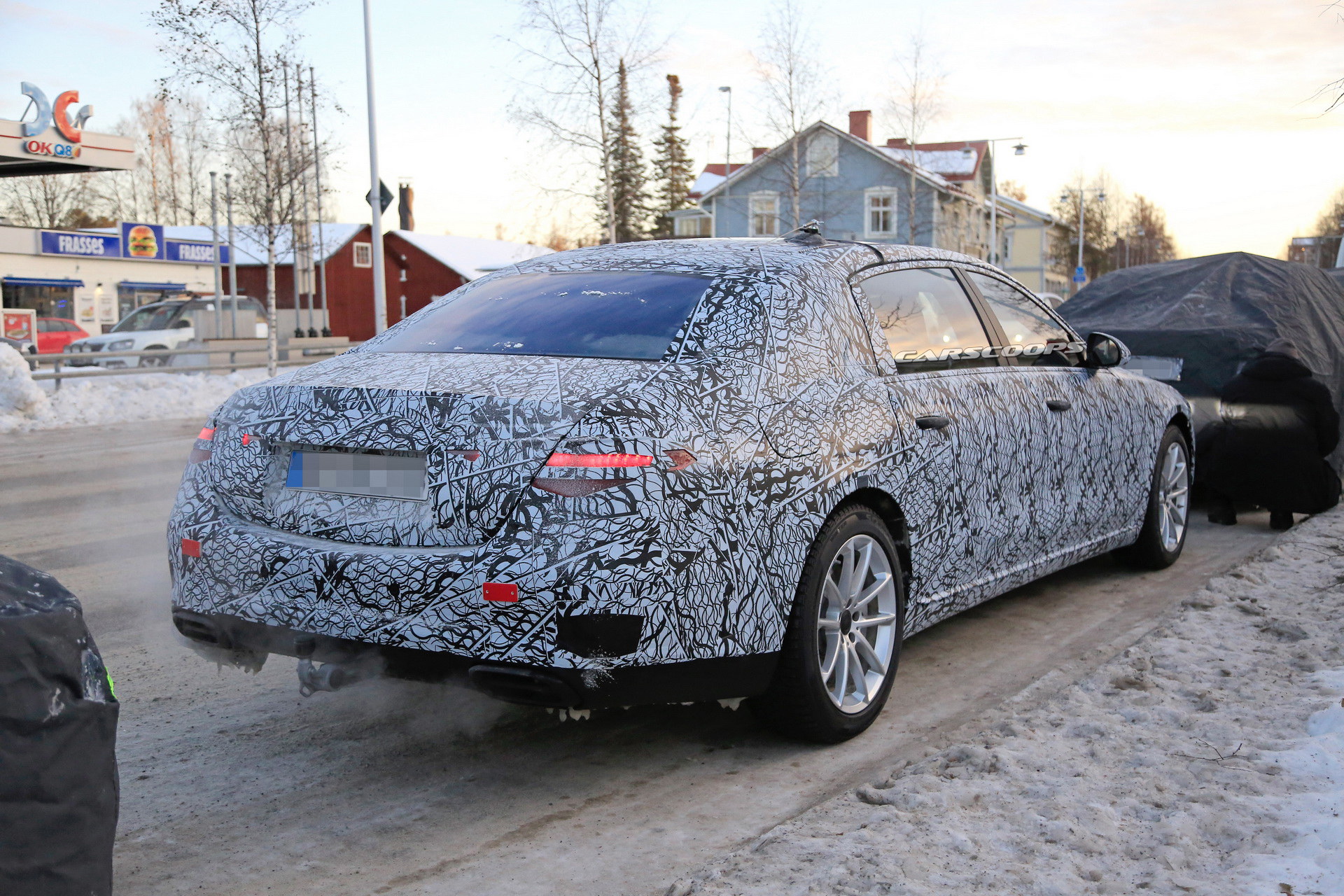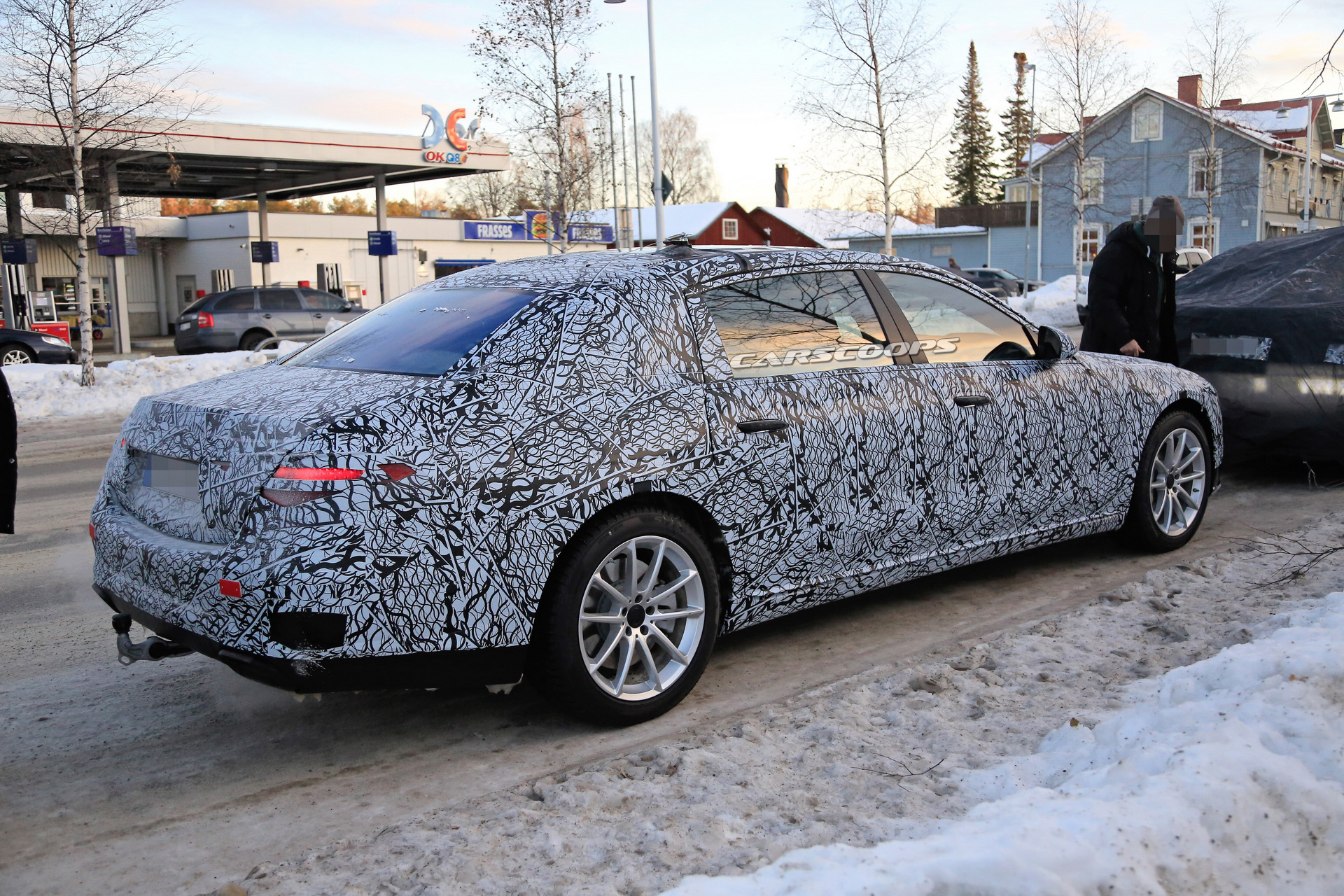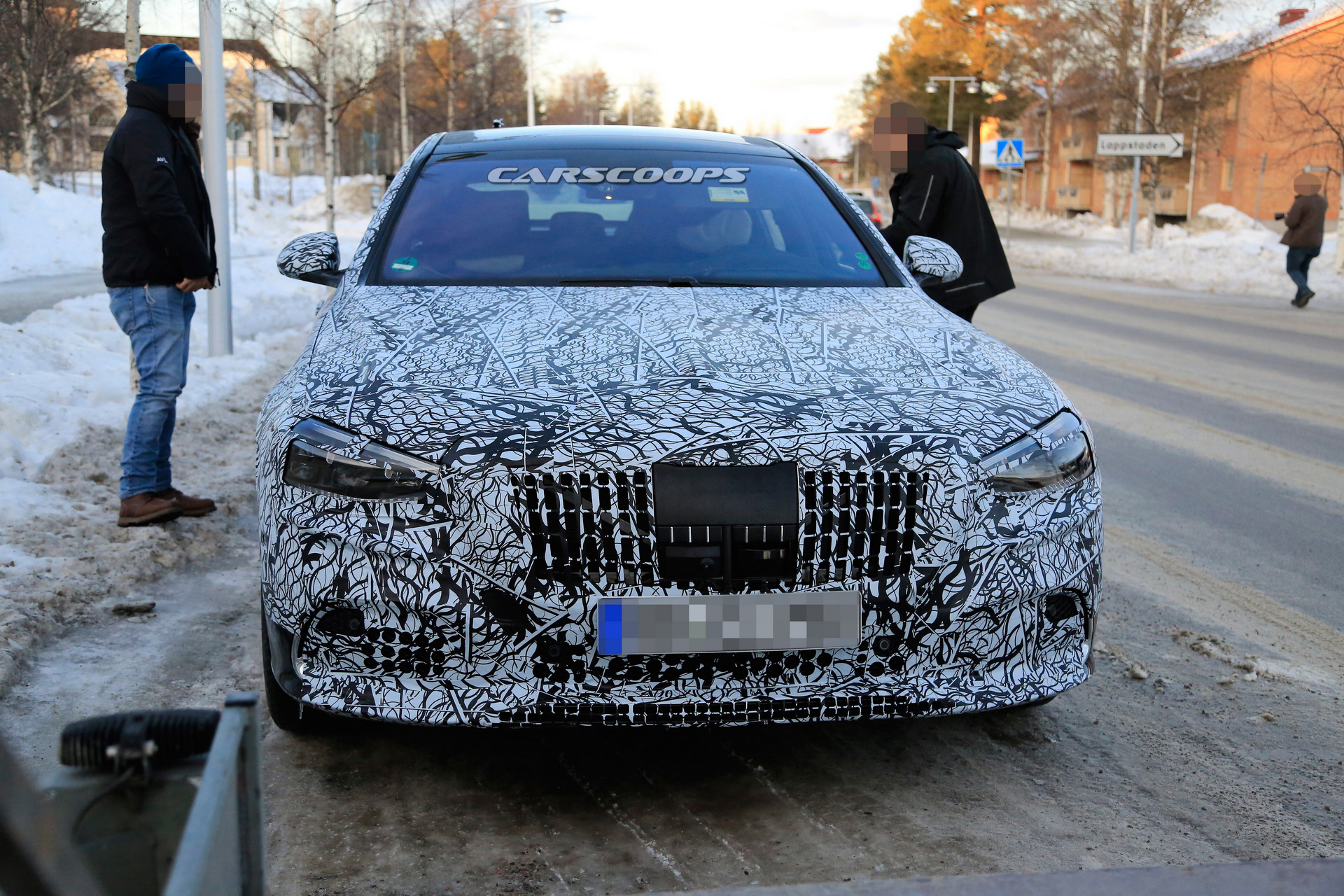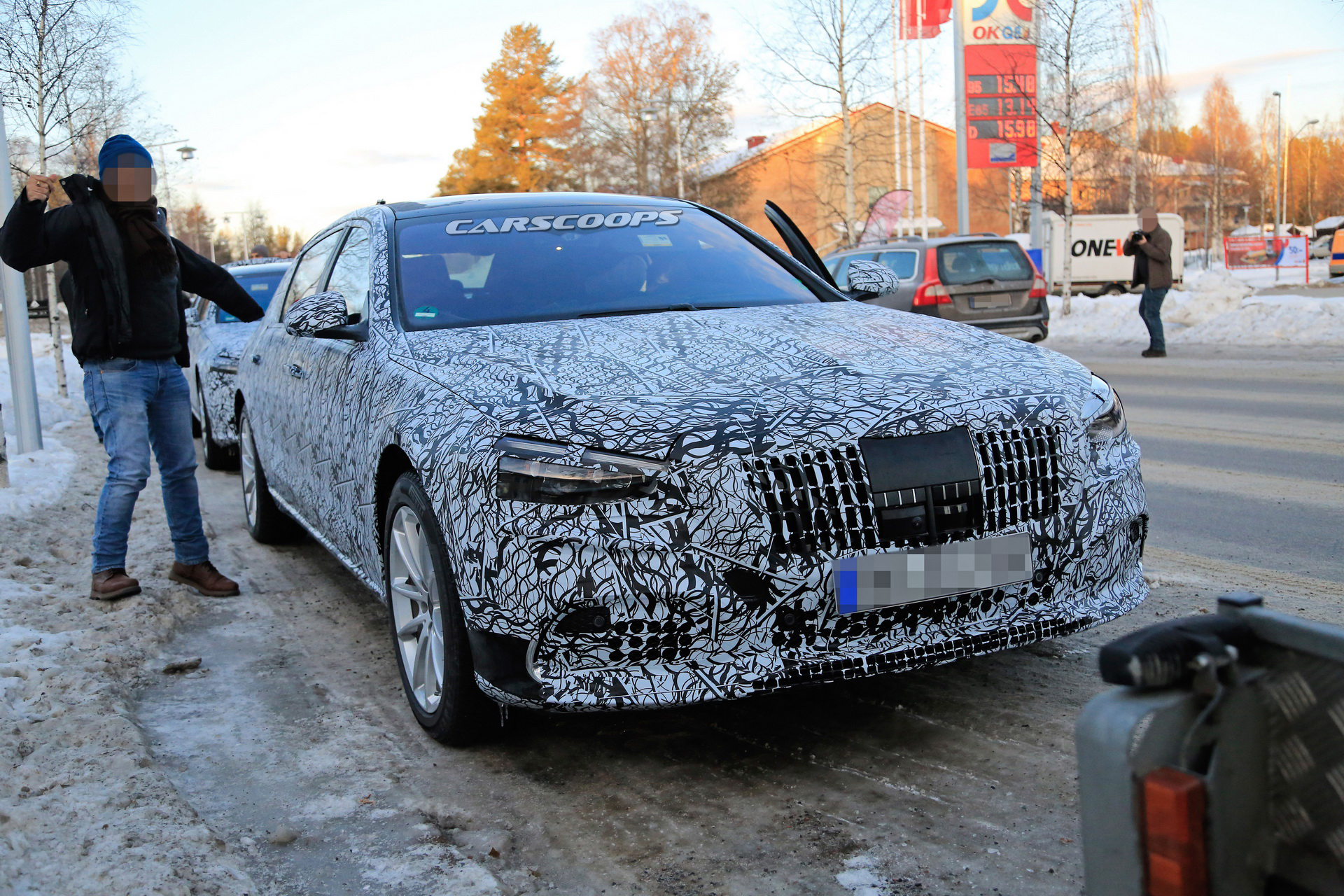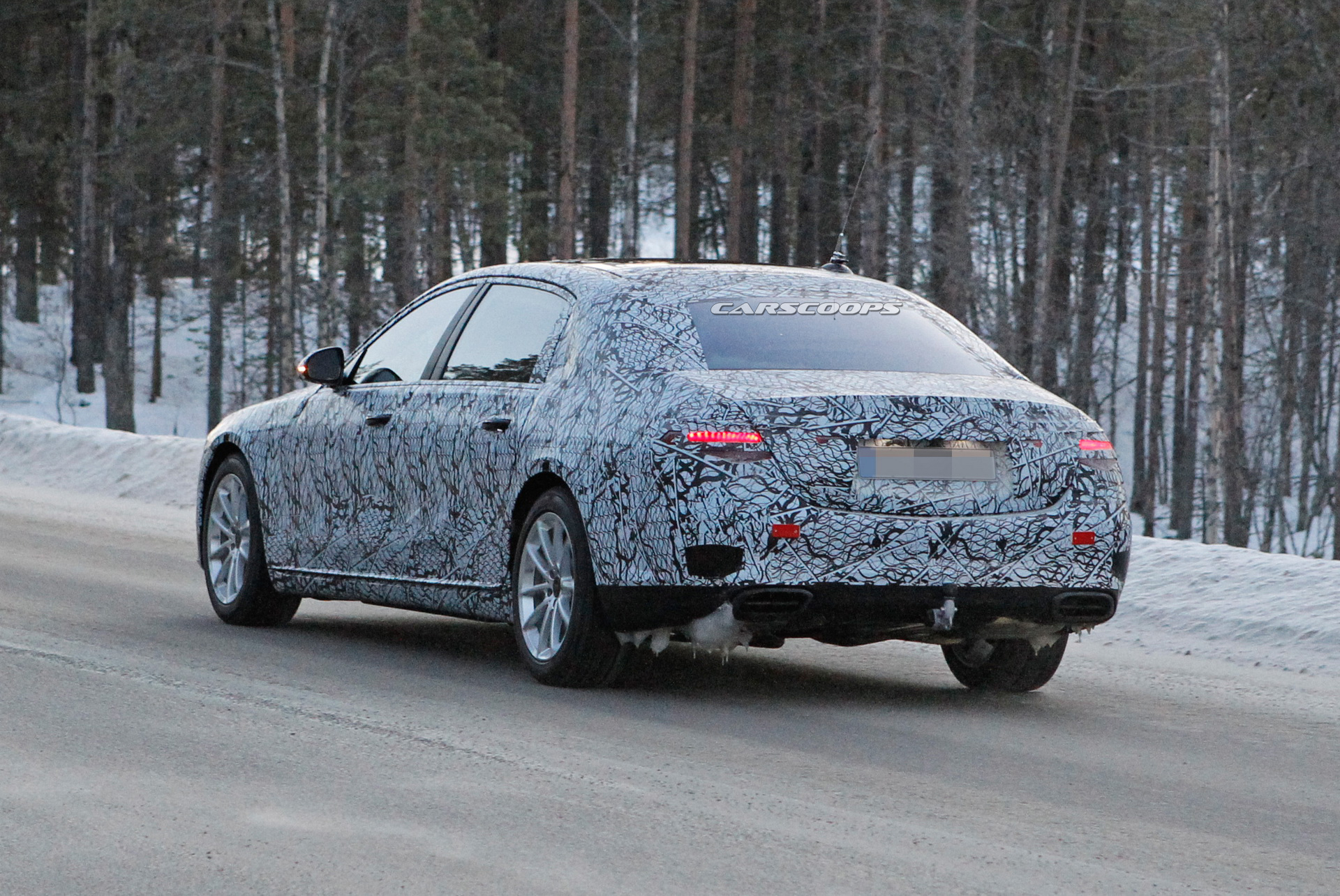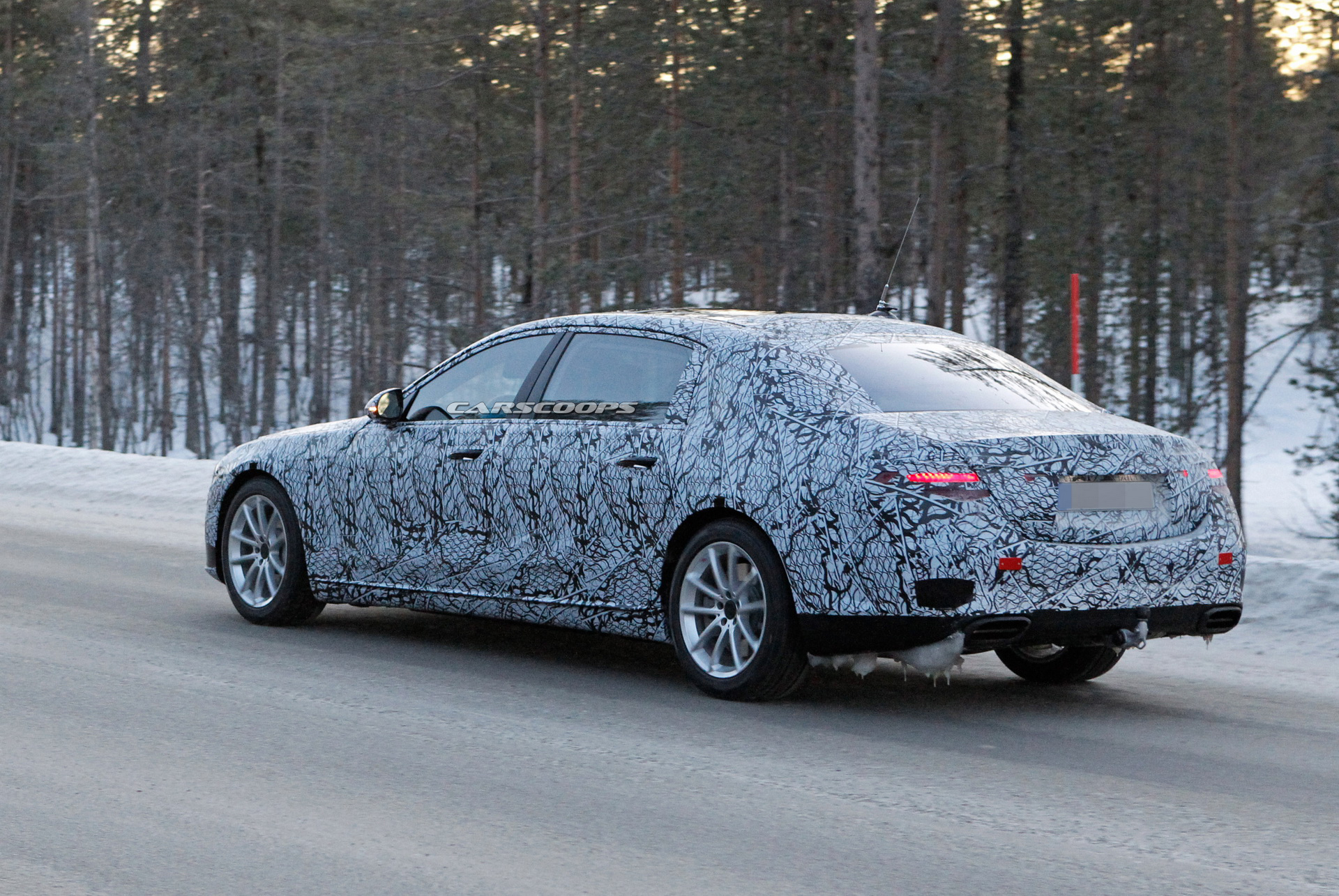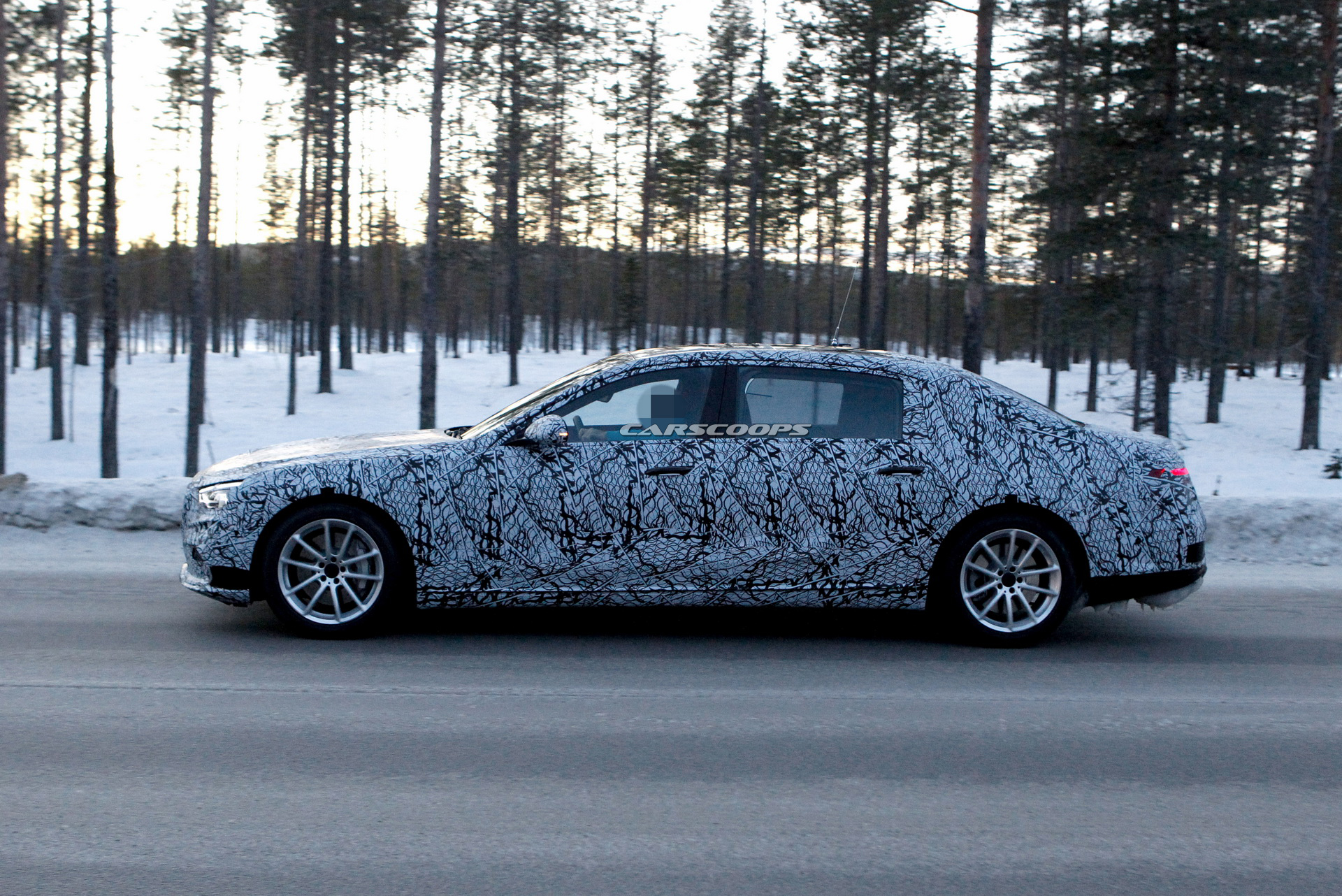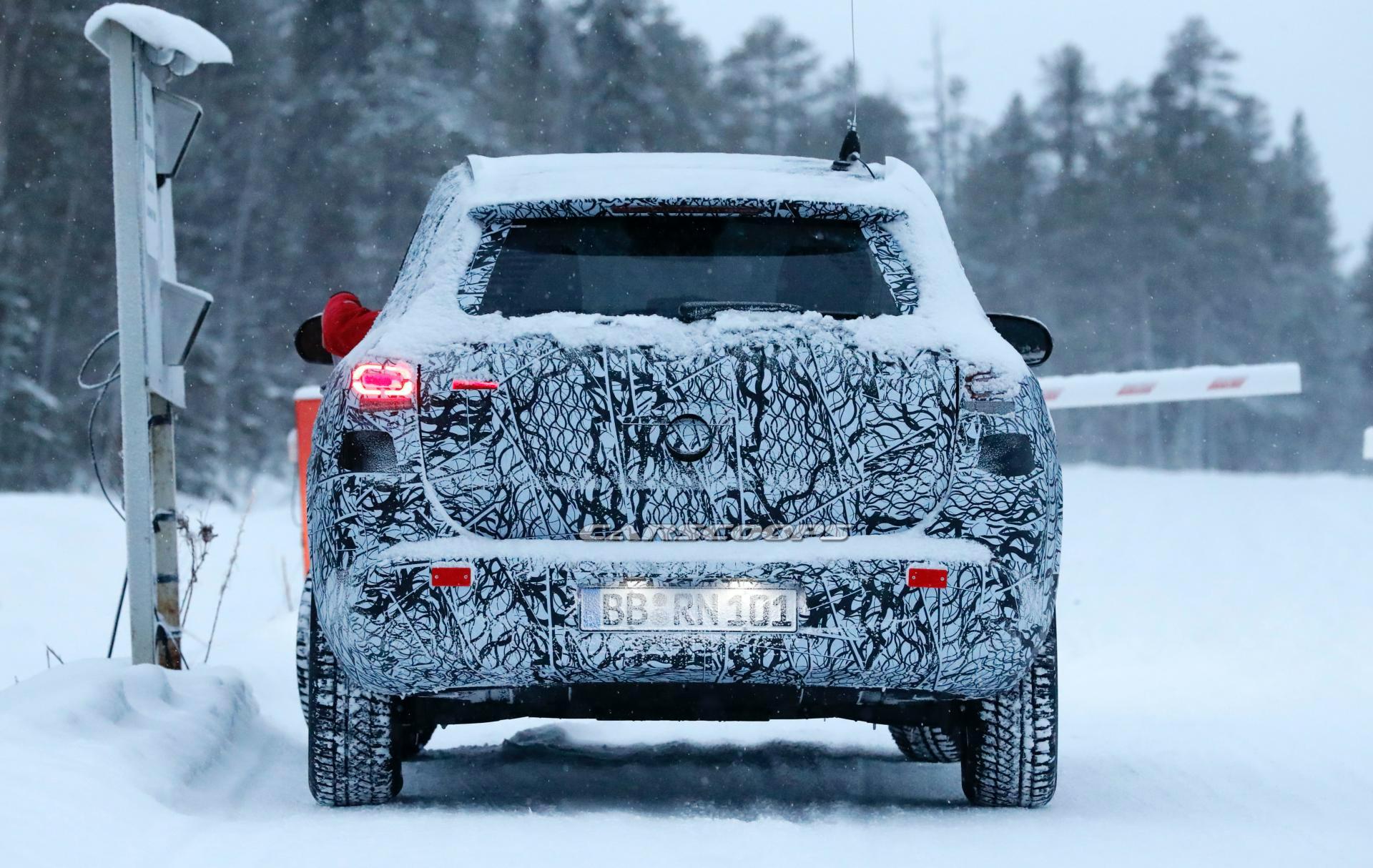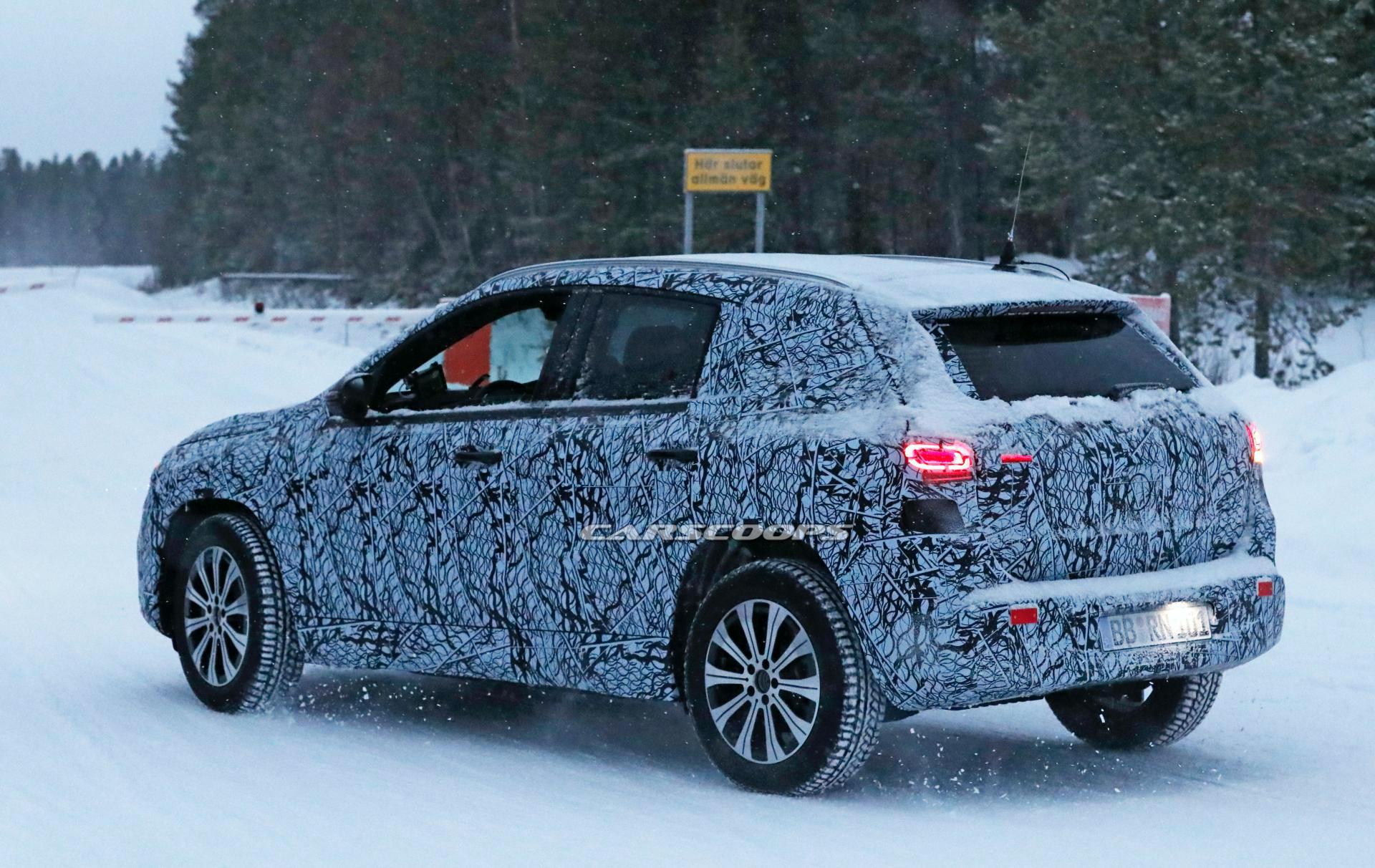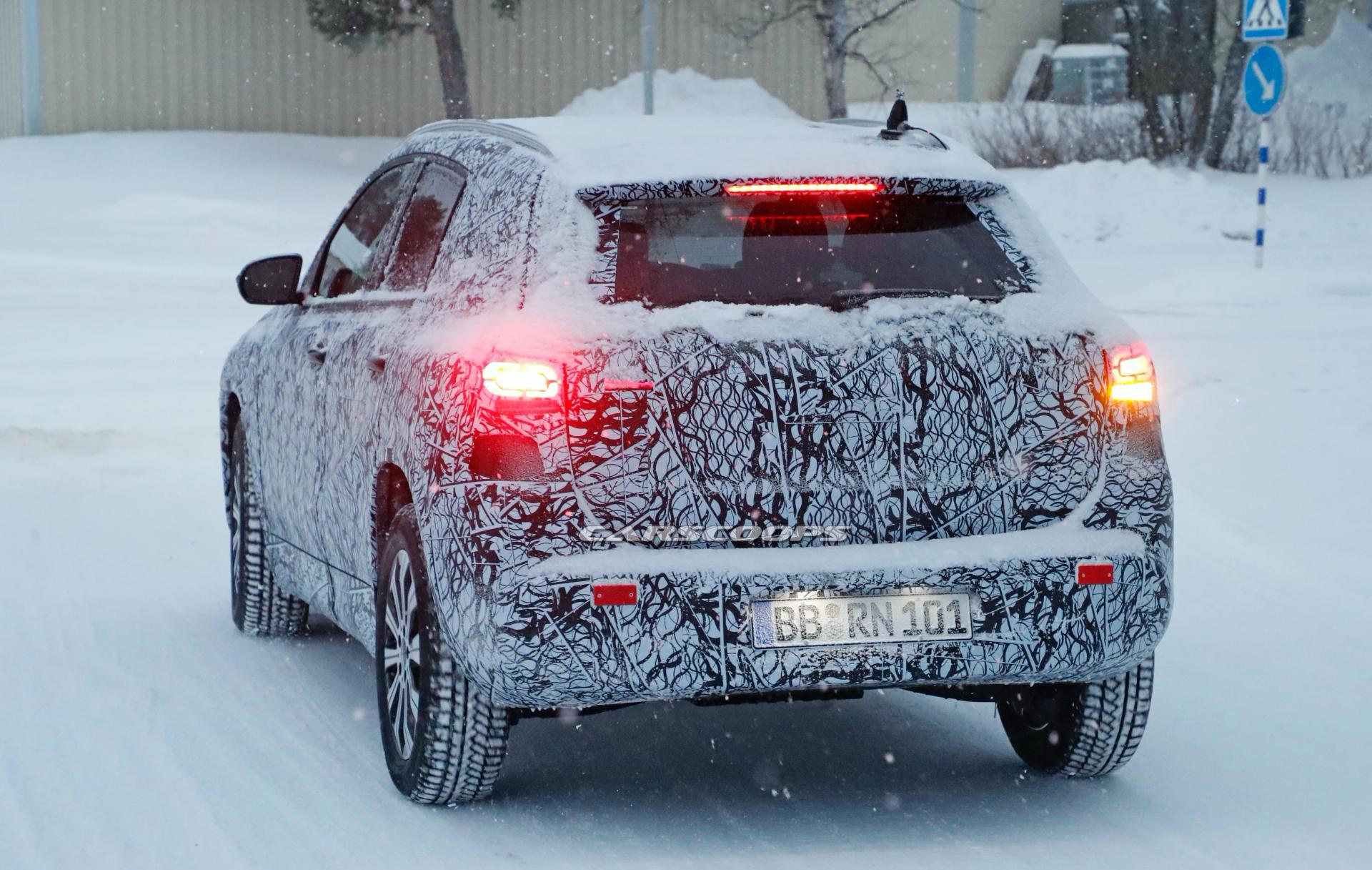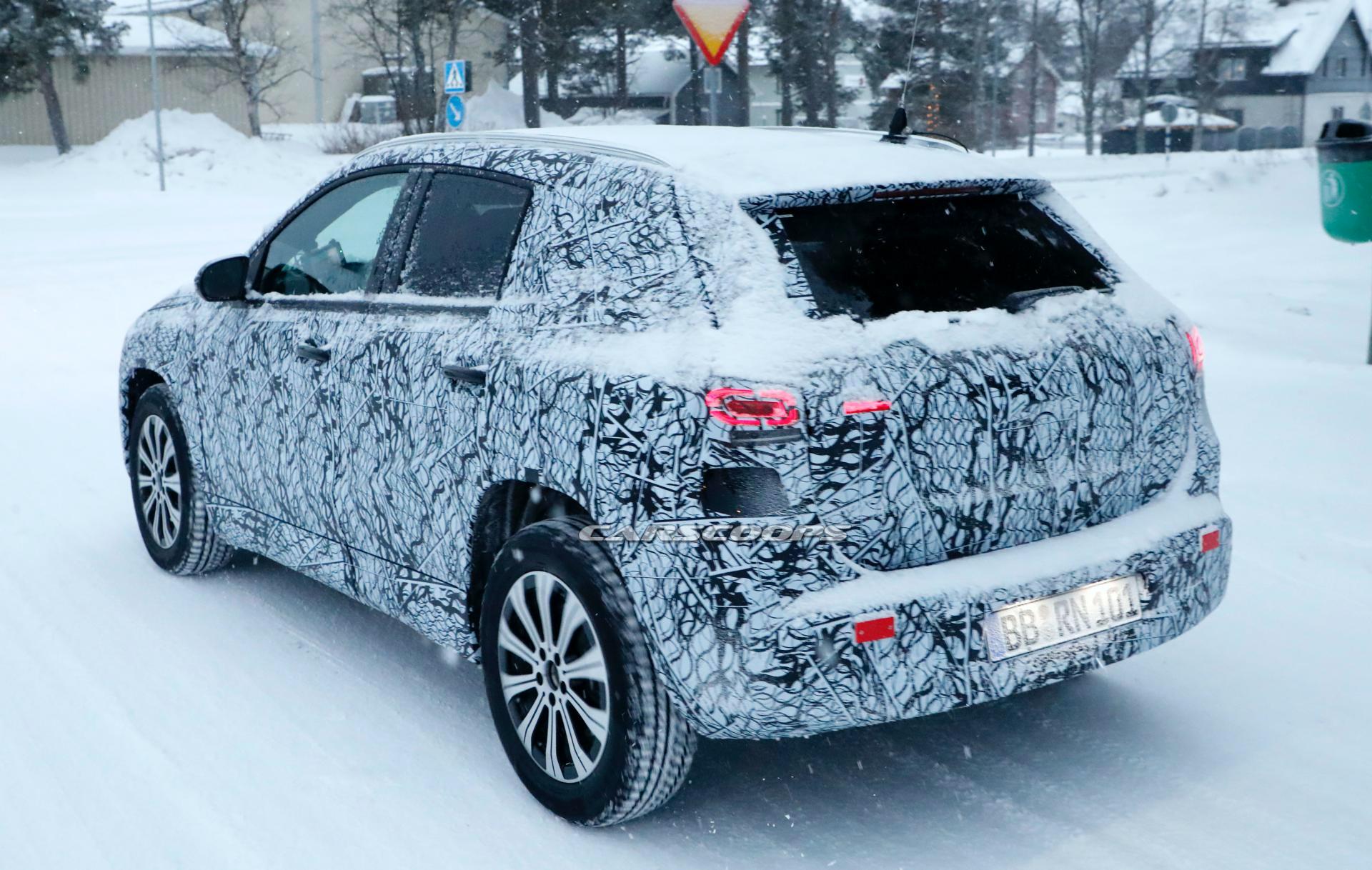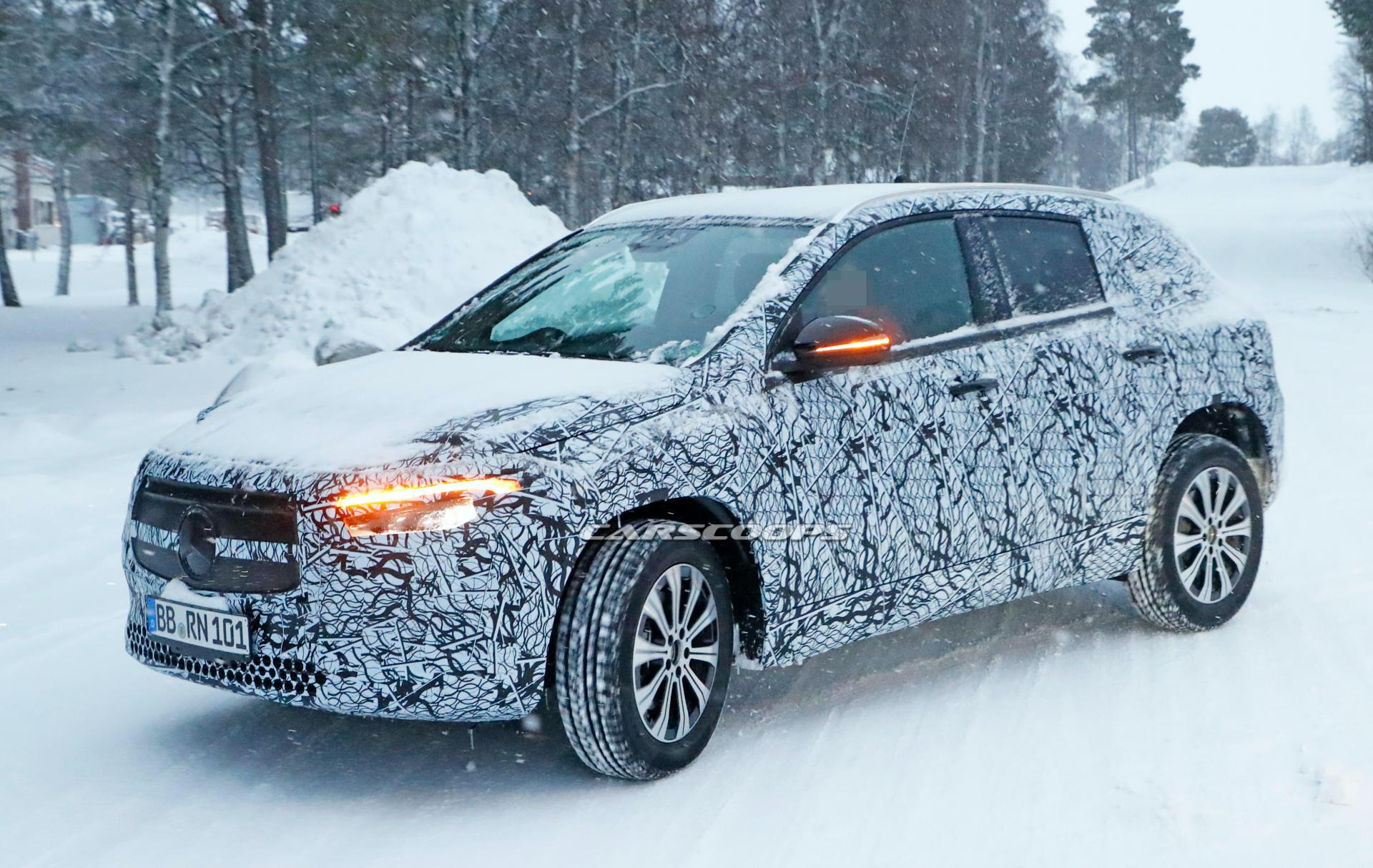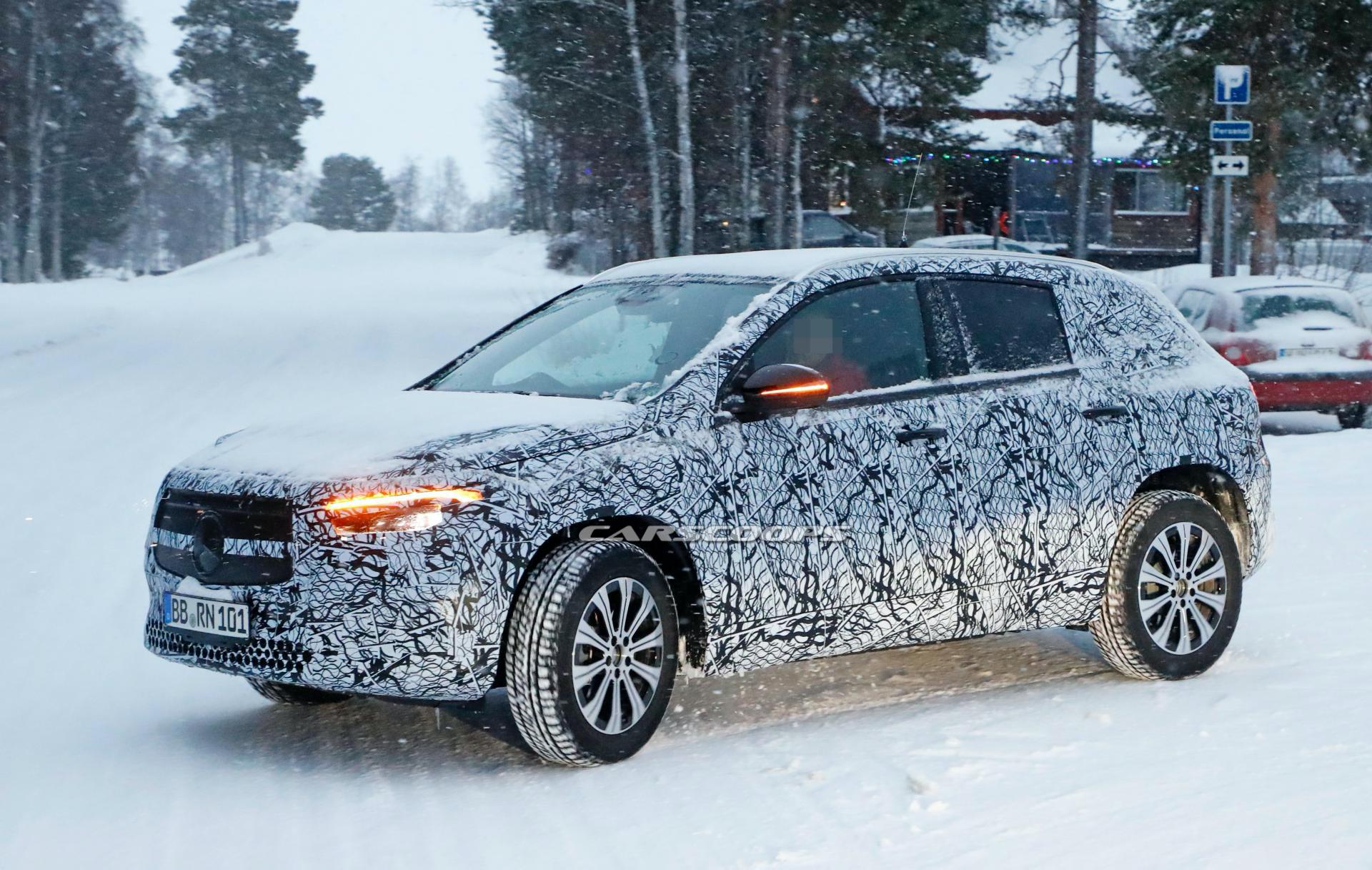Daimler has used its 2019 report to reveal some new details about the company’s future product plans.
Most notably, the automaker confirmed they will continue their “product and electrical offensive” this year.
The big news is Mercedes will unveil the redesigned S-Class later this year. The company didn’t say much about the flagship sedan, but confirmed it will have the “latest version of the MBUX multimedia system” and “raise the bar” in terms of connectivity.
That’s a bit of an understatement as the S-Class will adopt a futuristic interior with a digital instrument cluster and a massive touchscreen display that rises out of the center console. The latter features a portrait-orientation and appears to replace much of the traditional switchgear.
Besides the high-tech infotainment system, the S-Class will feature an evolutionary exterior and a host of eco-friendly engines. Choices remain unconfirmed, but could include a hybridized 3.0-liter inline-six with 362 hp (270 kW / 367 PS) and 369 lb-ft (500 Nm) of torque as well as a hybridized twin-turbo 4.0-liter V8 developing 483 hp (360 kW / 490 PS) and 516 lb-ft (699 Nm) of torque. We can also expect plug-in hybrids variants, high-performance AMG models and range-toppers with a V12 engine.
Besides confirming the S-Class, Mercedes revealed the EQA will be launched this fall. The model will be based on the GLA and feature a fully enclosed grille as well as a host of other styling changes. Little else is known about the crossover at this point, but it will have an electric powertrain.
Mercedes is also planning to launch “numerous variants” with plug-in hybrid powertrains and 48-volt technology. The company will have more than 20 plug-in hybrids by the end of the year and they should include the versions of the CLA, GLA and facelifted E-Class.
The CLA and GLA plug-in hybrids will have a turbocharged 1.3-liter four-cylinder petrol engine and an electric motor that is powered by a 15.6 kWh battery pack. This will give them a combined output of 215 hp (160 kW / 218 PS) and 332 lb-ft (450 Nm) of torque. More importantly, the models will be able to travel approximately 42 miles (68 km) on electricity alone.
Mercedes to cut jobs and costs
On the financial side of things, group sales fell to 3.34 million units in 2019 which is slight decrease from the 3.35 million that were sold in 2018. Despite this, revenues climbed 3% to $188.5 (€172.7) billion.
However, Daimler’s net profit plummeted from $8.3 (€7.6) billion in 2018 to $2.9 (€2.7) billion in 2019. The company’s free cash flow was also cut in half while the proposed dividend is a paltry $0.98 (€0.90) per share compared to last year’s $3.55 (€3.25).
Among the things blamed for the poor results are expenses related to the Takata airbag recall and legal proceedings about diesel engines in Mercedes vehicles. Besides those two relatively one-off incidents, the company spent heavily on new products and technologies.
Daimler Chairman Ola Källenius told investors that “We cannot be satisfied with our bottom line.” He added, “measures to cut costs and to increase cash flows are necessary.”
The company didn’t go into too many specifics, but they will make a “significant reduction of material and administrative costs and the reduction of personnel costs by more than $1.5 (€1.4) billion by the end of 2022.” In layman’s terms, Daimler is cutting jobs and promised this will be done in a “socially responsible manner.” There’s no word on specific numbers, but the company said management positions will be cut by 10%.
Besides cutting jobs, Mercedes will “streamline” their product portfolio. As part of this effort, the automaker confirmed the X-Class will go out of production in May.








